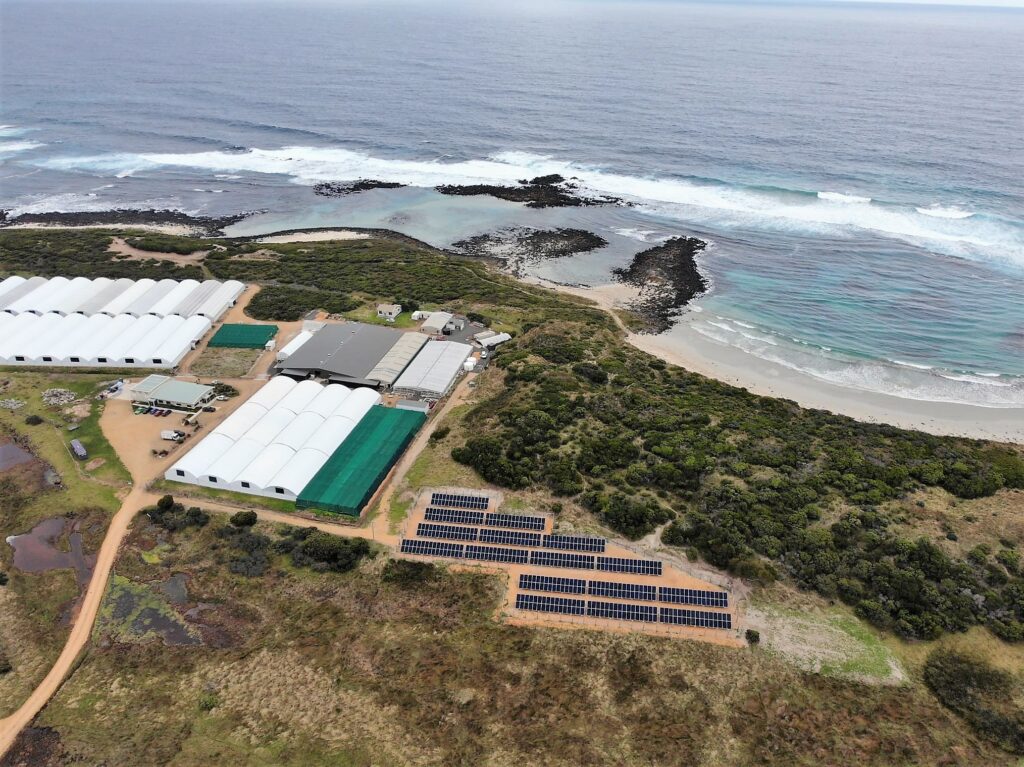Sustainability
Triple bottom line commitments.
AAGA members aim to deliver on environmental, social, and economic commitments to our communities. To these ends AAGA members go beyond compliance with regulations to include:
- Eco-efficiency benchmarking – Implementing benchmarking standards to determine where we are now as an industry and measure continued improvements.
- Sustainability Checklists
- Risk Assessments
- 3rd party certifications and audits.
Environment
Nutrient Emissions
Nutrient Emissions – Abalone farms are environmentally benign, with very low nutrient emissions returning to the marine environment. Low emissions are a product of the very efficient protein conversion by abalone compared to land animals. Being land-based pump ashore farms our outfalls are contained and scrubbed by the seaweeds that grow naturally in our outfall drains and settlement ponds further reducing nutrient levels prior to returning to the sea. The principal nutrients of concern are N, (Nitrogen) and P (Phosphorous). Abalone require Nitrogen concentrations to be maintained at very low concentrations. N and P emissions in outflow water are correspondingly low, typically well within tightly regulated EPA requirements. For the health of the abalone Oxygen levels are typically maintained at >95% saturation.
Climate Change and Carbon Emissions
Carbon emissions attributable to Abalone farming relate to energy consumption, processing, packaging and transport. Climate change is of great concern to abalone farmers, posing risks and opportunities.
Physical Risks Include:
- Damage from sea level rise and extreme weather events, as our farms are necessarily low lying and close to the ocean.
- Rising atmospheric and sea water temperatures. Water temperatures above the thermal tolerance of abalone can impact abalone growth and survival.
- Rising ocean acidification. Minor reductions in the pH of seawater has a dramatic effect on the ability of abalone to grow shell.
We aim to mitigate against the physical effects of climate change, especially increasing seawater temperatures and increasing ocean acidification. Mitigation measures include breeding for high temperature tolerance along with changes to dietary formulations and sourcing alternative low trophic level protein sources such as seaweeds.
Opportunities include:
- Resource Efficiencies. Including more efficient transport and distribution modes and greater recycling
- Energy Sources. Including power purchase agreements specifying renewable sources, on site renewable generation and participating in the carbon market. Further investments in hydrodynamic efficiency.
- Assisting an orderly transition to a lower carbon economy. In concert with FRDC, AAGA is working to establish accurate benchmarks of farm carbon emissions to accurately measure and report on emissions reductions over time.

Social
AAGA farms aim to have a positive impact on our local communities. These impacts go beyond the direct jobs we offer and employment of local contractors and service providers, extending to educational opportunities including university placements and sponsoring of local community associations. We also aim to make healthy and tasty abalone more available in domestic markets. For the nutritional value of farmed abalone please see link.
Biosecurity
Biosecurity may be defined as the prevention of disease causing organisms entering, moving within or leaving any site where they pose a risk to farmed stock, other animals, humans or the safety and quality of food.
All abalone farms have invested heavily in the design and implementation of site-specific Biosecurity Plans. These are living documents based on detailed risk assessments and include Standard Operating Procedures, ongoing staff training and adaptations to new and emerging threats. The plans include active and passive disease surveillance and are audited by state authorities. The AHAP (Abalone Health Accreditation Program) enables abalone farms to demonstrate and be certified as free from diseases. No notifiable diseases have been identified on any Australian abalone farms since 2011.
